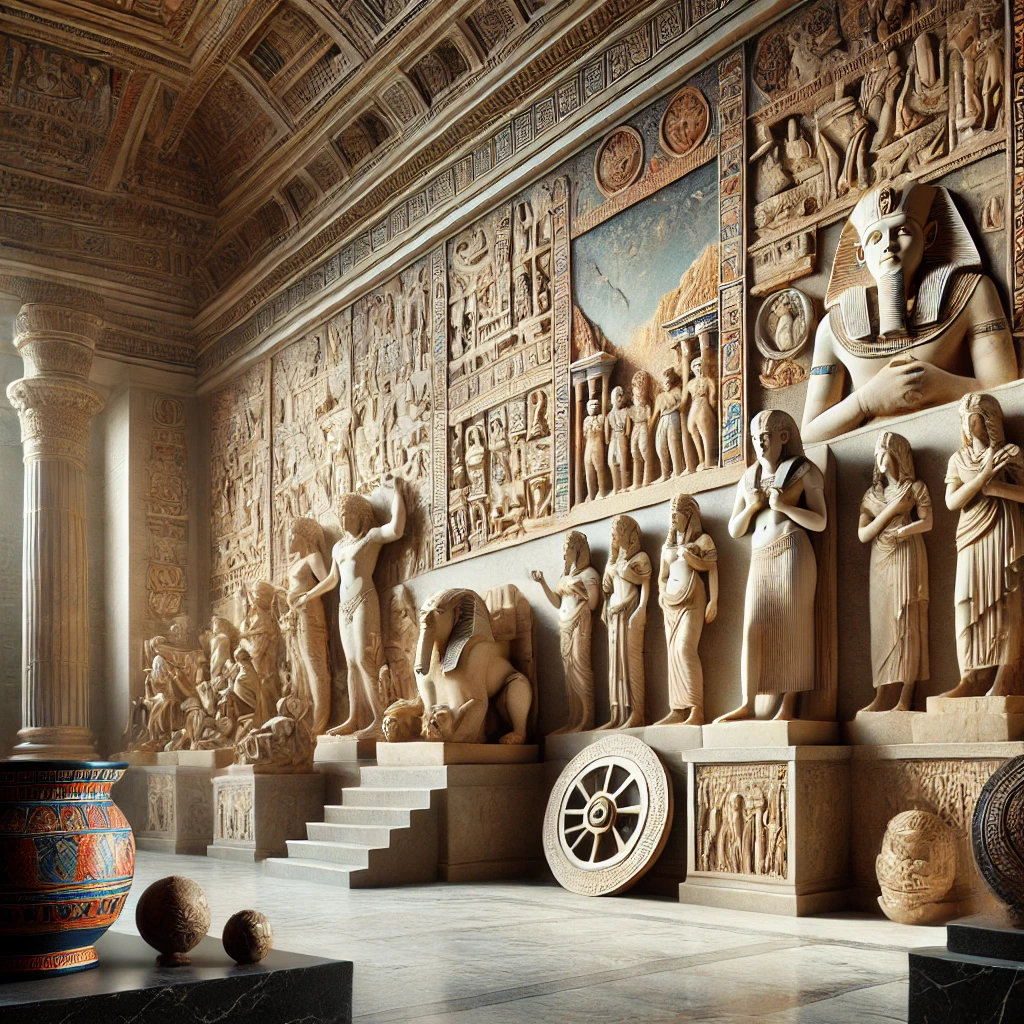The world of ancient artz is a vast and intriguing landscape, filled with rich traditions and history that span across centuries. Whether it’s the cave paintings of prehistoric man or the meticulously crafted sculptures of ancient civilizations, ancient art represents a form of storytelling that provides invaluable insights into human history. In this blog post, we’ll delve into the different facets of ancient art, its significance, and its impact on modern society. Additionally, we will explore how ancient art connects to broader cultural traditions, including its relationship with Argentina Cultural Traditions and Cultural Resource Management.
What is Ancient Art?
Ancient art refers to the various creative works produced by the early civilizations before the fall of the Western Roman Empire in 476 AD. These include artistic forms from ancient Egypt, Mesopotamia, Greece, and Rome, among others. Each civilization contributed uniquely to the evolution of art, from intricate pottery and sculptures to majestic architecture and storytelling through murals.
What’s remarkable about ancient art is its endurance over millennia. It serves not only as a representation of aesthetic beauty but also as a medium for communication, religious expression, and cultural identity.
Importance of Ancient Art in Understanding Human History:
Art from ancient times is one of the most important tools historians use to understand human history. Each brush stroke, chisel mark, or weaving technique tells a story, offering glimpses into the lives, beliefs, and struggles of early humans. For instance, the art of Mesopotamia provides insight into the religious and political hierarchy, while Argentina Cultural Traditions, influenced by indigenous art forms, reflect a mix of Spanish and native customs.
The value of ancient art isn’t just in its beauty. It’s also found in the way these artworks provide evidence of technological innovation, religious rituals, and social structures. As we study ancient art, we come closer to understanding the intellectual and spiritual concerns that shaped early civilizations.
Types of Ancient Art:
Ancient art encompasses a variety of mediums and styles, each unique to its culture:
-
Sculpture:
Ancient Greece and Rome were well-known for their marble and bronze statues that depicted gods, emperors, and mythological scenes. These works emphasized realism and human emotion, marking the beginning of classical art traditions.
-
Pottery:
Cultures such as ancient Egypt and Mesopotamia used pottery not only for daily life but also to represent religious and symbolic art. These pieces often included depictions of gods, animals, and rulers.
-
Painting and Murals:
The Egyptians excelled in painting, with the walls of tombs covered in vibrant depictions of the afterlife. Similarly, early cave paintings such as those found in Lascaux, France, give insight into prehistoric life and rituals.
-
Jewelry and Metalwork:
Ancient Egyptians are renowned for their elaborate gold jewelry, which was crafted for both fashion and burial rites. Metalwork was another significant art form, with tools, weapons, and ceremonial objects showcasing the technical skills of artisans.
By comparing these forms with Argentina Cultural Traditions, we see how indigenous tribes employed different materials and techniques to create art that similarly preserved their cultural heritage. This intersection demonstrates how ancient art influenced not only Europe but also South America.
Ancient Art and Its Role in Cultural Preservation:
Ancient art has a lasting role in the preservation of cultural identity. When we study artifacts, we gain more than just artistic appreciation—we uncover entire belief systems and societal structures. This is where Cultural Resource Management (CRM) becomes essential. CRM is responsible for preserving and managing cultural resources, such as ancient artworks, historic buildings, and archaeological sites. The intersection of ancient artz and Cultural Resource Management ensures that these invaluable pieces of history are protected and studied for future generations.
Through Cultural Resource Management, we can safeguard and interpret ancient art forms in their original contexts, enabling us to pass down these treasures and the lessons they hold to future generations. Ancient art is not only about the past; it is a continuous thread that connects us to modernity.
The Influence of Ancient Art on Modern Culture:
Modern artists often draw inspiration from ancient forms of art, breathing new life into traditional techniques. The revival of ancient aesthetics, such as the neoclassical art movement in the 18th and 19th centuries, showcases how ancient art continues to shape contemporary creative expressions.
In South America, specifically in Argentina, indigenous art forms that reflect Argentina Cultural Traditions are revived and celebrated. These forms include weaving techniques, pottery, and mural art that embody the spirit of both ancient and colonial influences.
Moreover, as globalization bridges cultural gaps, ancient art from various parts of the world becomes more accessible to a global audience. This accessibility has spurred a newfound appreciation and awareness of the art forms that once defined early civilizations.
Why Ancient Art Still Matters Today:
Ancient art has stood the test of time because it transcends eras and generations. Its themes—religion, nature, human emotion—are universal. The narratives captured in these works reflect values, beliefs, and questions that remain relevant today. From a spiritual standpoint, ancient art continues to inspire faith and reflection in contemporary societies.
More importantly, ancient art reinforces the idea that all human civilizations, no matter how distant in time or place, are interconnected. The artistic innovations and cultural expressions of our ancestors laid the groundwork for modern art, architecture, and philosophy.
FAQs:
1. Why is ancient art important for historians?
Ancient art provides historians with crucial insights into early human civilizations, including their social structures, religious beliefs, and technological advancements.
2. What are the major forms of ancient art?
The major forms of ancient art include sculpture, pottery, painting and murals, jewelry, and metalwork. Each form varies by civilization but shares common themes of storytelling and religious significance.
3. How does ancient art influence modern culture?
Ancient art has a profound influence on modern culture by inspiring artistic movements, such as neoclassicism, and continuing to shape how artists and architects approach their craft today.
4. What role does Cultural Resource Management play in ancient art preservation?
Cultural Resource Management (CRM) plays a key role in preserving ancient art by ensuring that historical sites, artifacts, and cultural expressions are protected and studied for future generations.
5. How do ancient and indigenous art forms intersect in Argentina?
In Argentina, indigenous art forms reflect a blend of native and colonial influences, preserving cultural traditions that continue to thrive in modern art practices today.
Conclusion:
In conclusion, ancient artz offers a timeless window into the lives, beliefs, and creativity of early human civilizations. From the monumental sculptures of Greece and Rome to the intricate pottery of Mesopotamia, ancient art forms have shaped the course of history, preserving cultural heritage in ways that continue to inspire and influence modern society. The role of Cultural Resource Management ensures that these invaluable artifacts are protected for future generations, while contemporary practices like those seen in Argentina Cultural Traditions maintain the relevance and vibrancy of ancient artistic traditions.



